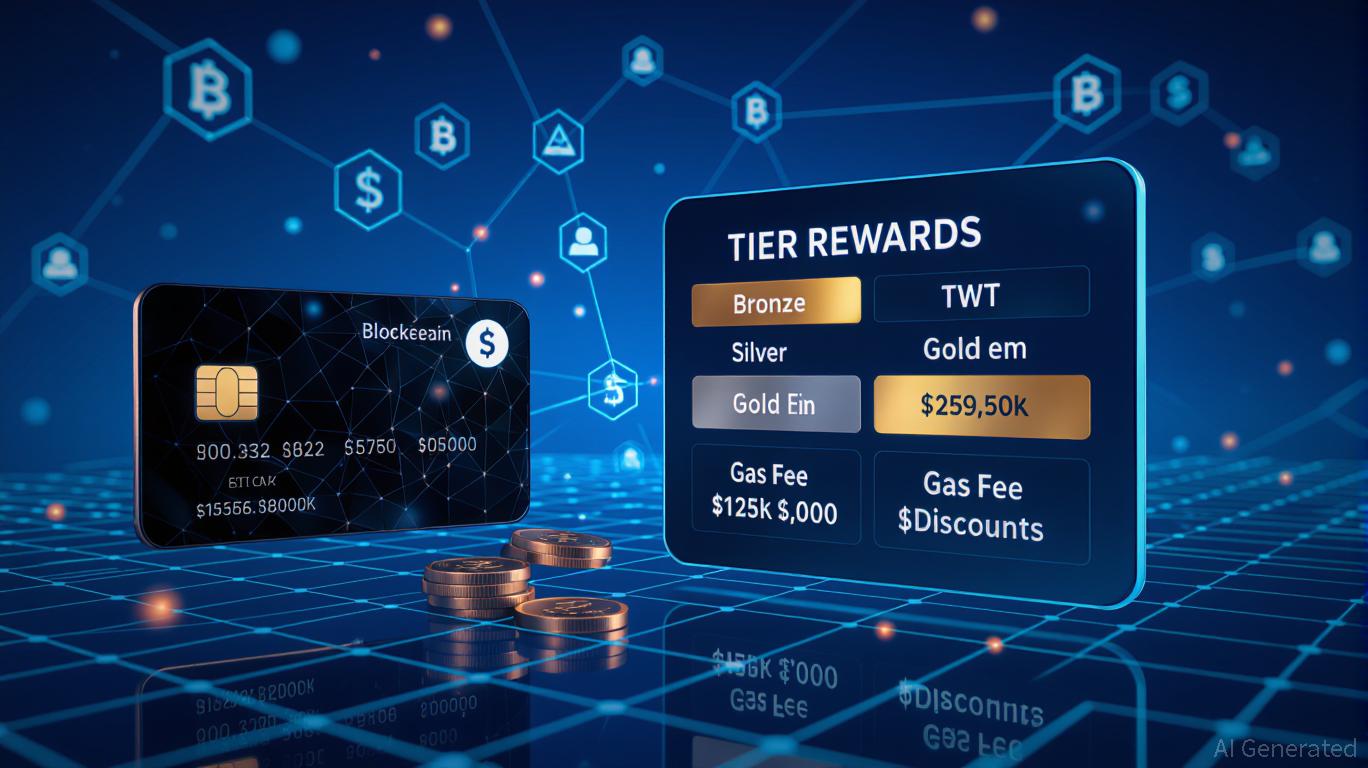The Quantum Computing Hype Cycle and What It Means for the Valuation of Cybersecurity Stocks
- Quantum computing threatens RSA/ECC encryption by 2025, accelerating post-quantum cryptography (PQC) adoption and investment in quantum-safe firms. - NIST's 2030 PQC standards and "harvest now, decrypt later" strategies force urgent infrastructure upgrades, with governments stockpiling sensitive data. - SEALSQ leads the quantum-safe sector with $220M liquidity, $17.5M 2025 revenue guidance, and PQC-embedded semiconductors for IoT/automotive sectors. - High-risk plays like BTQ (blockchain PQC) and pre-rev

The era of quantum computing is rapidly moving from science fiction to reality, fundamentally altering the landscape of global cybersecurity. By 2025, the risk that quantum computers could undermine traditional encryption methods such as RSA and ECC is growing, fueled by progress in both algorithms and hardware. This evolution brings two urgent challenges: reducing immediate vulnerabilities in current encryption systems and pinpointing undervalued companies specializing in quantum-resistant technologies that are set to thrive as post-quantum cryptography (PQC) becomes standard.
Immediate Threats Facing Traditional Encryption
The potential for quantum computers to defeat classical encryption depends on the creation of a cryptographically relevant quantum computer (CRQC)—a machine with sufficient stable qubits and error correction to effectively run Shor’s or Grover’s algorithm. Although such a device is not yet operational, recent advancements have shortened the expected timeline for its arrival.
- Algorithmic Breakthroughs: In 2025, Craig Gidney’s research slashed the number of qubits needed to break RSA-2048 from 20 million to less than 1 million, bringing the anticipated “Q-Day” much closer.
- Hardware Progress: Google’s “Willow” initiative in 2024 achieved scalable logical qubits using surface code error correction, marking a significant milestone toward practical quantum computing.
- Regulatory Momentum: The U.S. National Institute of Standards and Technology (NIST) has approved three quantum-resistant algorithms (FIPS 203, 204, 205), with worldwide adoption likely to accelerate by 2030.
The “harvest now, decrypt later” (HDNL) approach—where adversaries collect encrypted data now to decrypt it with future quantum computers—has become a major catalyst for urgent action. Governments and intelligence organizations are already amassing sensitive information, making the shift to PQC increasingly critical.
Quantum-Safe Investment Opportunities
Despite the seriousness of the threat, the quantum-safe technology sector remains fragmented and undervalued. Most publicly listed companies in this field are either early-stage innovators or specialized players with uncertain revenue prospects. Still, the pressing need for quantum-safe solutions presents a rare chance for investors to back firms with solid technical expertise and clear commercialization strategies.
SEALSQ Corp (NASDAQ: LAES): The Financially Robust Front-Runner
SEALSQ distinguishes itself as the leading quantum-safe company, boasting strong finances and a transparent path to revenue growth. Headquartered in Switzerland and spun off from
- Financial Performance: Preliminary unaudited revenue for the first nine months of 2025 reached $9.9 million, including $5.1 million in Q3. The company projects full-year revenue of $17.5–$20 million, representing 59%–82% annual growth.
- Liquidity: With $220 million in available funds, SEALSQ has ample resources for research, development, and expansion.
- Strategic Moves: The acquisition of IC'ALPS in August 2025 enhanced SEALSQ’s ASIC design capabilities, speeding up its product development timeline.
BTQ Technologies Inc. (NEO: BTQ): The Speculative Growth Prospect
Based in Vancouver, BTQ is developing blockchain infrastructure fortified with PQC methods. Although its Q1 2025 revenue was just C$0.25 million, its $1.3 billion market capitalization reflects high expectations for future demand in finance and large-scale web networks.
- Key Advantages: BTQ’s focus on wallets, digital signatures, and random-number generation aligns with NIST’s PQC guidelines.
- Risks: The company’s limited cash reserves (C$8 million) and lack of a clear revenue model mean it must continue to raise capital.
01 Communique (TSXV: ONE): The Early Niche Entrant
Rebranded as “01 Quantum,” 01 Communique has shifted from legacy remote-access products to PQC-based encryption under its IronCAP brand. With annual revenue of C$0.4 million and C$1.3 million in cash, it targets businesses looking to secure their data for the future.
- Market Position: As an early entrant in Canada’s PQC sector, 01 Quantum has opportunities for partnerships in identity and access management (IAM).
- Limitations: Its small scale and dependence on external funding restrict its growth potential.
Quantum eMotion Inc. (TSXV: QNC): The High-Stakes Contender
Quantum eMotion, a Canadian company working on quantum random-number-generator (QRNG) chips, holds $24 million in cash but has yet to generate revenue. Its technology is vital for secure key generation in quantum-resistant systems, especially in banking and defense sectors.
- Growth Potential: The company’s $480 million market cap reflects investor optimism for future expansion.
- Challenges: It must prove its commercial viability to support its valuation.
Investment Approach: Managing Risk and Opportunity
The quantum-safe cybersecurity industry is still emerging, with company valuations ranging from speculative to those with near-term revenue. A balanced investment strategy is crucial:
- Core Investments: Focus on companies like SEALSQ that have significant cash reserves, predictable revenue, and strategic alliances.
- Growth Opportunities: Invest in firms such as BTQ and 01 Quantum for exposure to fast-growing areas like blockchain and IAM, while being patient for commercial returns.
- Speculative Positions: Consider Quantum eMotion for its foundational technology, but limit exposure due to its lack of revenue.
Conclusion: The Quantum Shift Has Arrived
The move toward quantum-resistant infrastructure is no longer theoretical—it is an urgent global necessity. Although Q-Day may still be a decade away, the “harvest now, decrypt later” tactic requires immediate attention. For investors, the priority is to identify companies that not only address the urgency of this transition but also possess the technical expertise to protect data in a post-quantum era.
SEALSQ, with its strong financial position and proven commercialization, stands out as the top near-term pick. Nevertheless, the sector’s long-term promise also depends on supporting early-stage innovators like
Disclaimer: The content of this article solely reflects the author's opinion and does not represent the platform in any capacity. This article is not intended to serve as a reference for making investment decisions.
You may also like
Trust Wallet Token (TWT) Price Forecast: Ushering in a New Chapter for Decentralized Finance?
- Trust Wallet Token (TWT) surged to $1.6 in October 2025, doubling from June lows, driven by strategic integrations and institutional partnerships. - TWT's reimagined utility model, including Trust Premium loyalty rewards and Onramper fiat-onboarding, boosted real-world adoption in emerging markets. - Institutional interest grew via RWA tokenization (e.g., U.S. Treasury bonds) and ZKsync privacy integrations, while Q3 2025 data showed $330M market cap and $11M daily volume. - Analysts project $5.13 (2025)

HBAR's ETF Surge Contrasts with Institutional Sell-Off as Token Drops 2.1%
- HBAR fell 2.1% to $0.1837 as a 95% volume surge signaled institutional selling pressure, breaking key resistance near $0.1940. - Canary Capital's first U.S. HBAR ETF (HBR) launched October 28, 2025, aiming to boost institutional access despite recent price weakness. - Technical indicators show bearish structure with critical support at $0.1831, suggesting further downside risk if consolidation fails. - While Hedera's enterprise blockchain infrastructure remains stable, macroeconomic pressures and regulat

Buffett Prefers Entrusting His Wealth to Family Rather Than Directing Philanthropy After His Passing
- Warren Buffett accelerates $150B estate distribution via family foundations, allocating $500M annually to four charities. - Shifts from Giving Pledge model to direct family stewardship, donating 2.7M Berkshire shares worth $1.35B to children's foundations. - Retirement as Berkshire CEO in 2025 and admission of past philanthropy's "infeasibility" highlight pragmatic approach to wealth transfer. - Strategy reflects broader trend toward decentralized giving, challenging traditional pledge frameworks with 9/
Ethereum Updates: $36B DeFi Outflow Highlights Security and Governance Issues Threatening Ethereum
- DeFi's total value locked (TVL) fell $36B in weeks, with Ethereum losing 13% to $74.2B amid security breaches and waning institutional interest. - High-profile exploits like Balancer's $120M hack exposed DeFi vulnerabilities, while Ethereum's price languished near $3,600 with $2,600 support at risk. - Positive signals include Tron's Justin Sun staking $154M ETH and Lido DAO's $10M token buyback, reflecting growing staking demand and confidence. - Analysts predict Ethereum could break out in 2026 due to r
